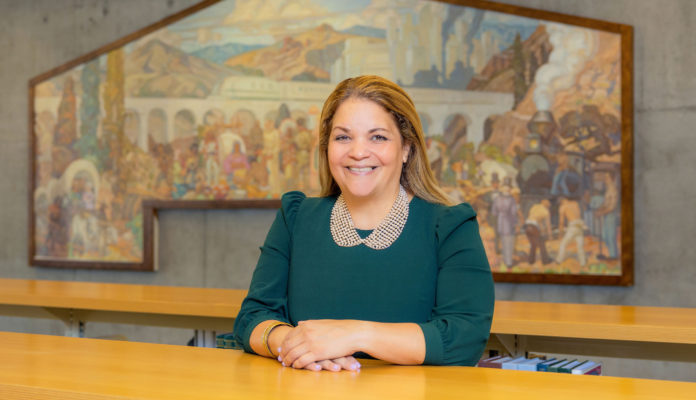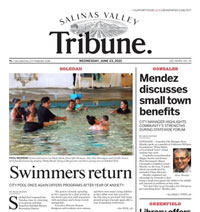On a recent bright and warm Thursday afternoon, I strolled through our campus, surrounded by Folklorico dancers moving to lively music in their vibrant skirts, with ribbons woven into their braided hair. Latiné artists showcased their drawings, earrings and postcards. Students enjoyed free pupusas with salsa verde, creating a vibrant Hispanic Heritage Month celebration on a campus where 54% of students identify as Hispanic/Latiné.
The celebration of Hispanic identity at Cal State Monterey Bay goes beyond Hispanic Heritage Month. We offer numerous opportunities throughout the year to recognize the culture and experiences of our diverse student body. In 2023-24, we ranked among the top 50 universities nationwide for graduating the highest number of Hispanic and minority students, according to Diverse: Issues in Higher Education.
Cal State Monterey Bay is designated as a Hispanic-Serving Institution (HSI). According to the National Academies of Sciences, Engineering, and Medicine, HSIs account for the largest and fastest-growing segment of minority-serving institutions. Over the past two decades, the share of Latiné students has doubled, leading to a significant increase in HSIs. Latiné learners now represent nearly one in five college students aged 18 to 24.
HSIs also educate a large number of students who are Black, Asian, mixed race or from other ethnic backgrounds. Indeed, according to Hispanic Association of Colleges and Universities (HACU) data from 2023, HSIs enroll more Black students than historically Black colleges and universities — 24.4% of students enrolled in HSIs are Black. Furthermore, more than 31.6% of students enrolled at HSIs were first-generation. And they have a high concentration of low-income students who are eligible for Pell Grants.
A recent report from the Urban Institute supports this by showing that graduation rates improve for students of all ethnicities enrolled in HSIs. The report highlighted an increase in college completion rates and baccalaureate degree attainment across all races and ethnicities at HSI-designated institutions.
At Cal State Monterey Bay, we take pride in being one of the few Cal State University campuses that has eliminated the equity and Pell-eligible gaps in graduation rates.
In the third quarter of 2023, Hispanics comprised 19.1% of the U.S. labor force. By 2030, the number of Hispanic workers is projected to reach 35.9 million, making up 78% of the net new workers added between 2020 and 2030.
The Center for American Progress reported that “Experts predict that 6.2 million more Latinx students will need to earn a college degree over the next 10 years in order for the United States to regain top international standing in college completion, meet workforce needs, and see a strong recovery from the pandemic. This means that a major new investment would not only pay off for one of the fastest-growing populations in the United States; it would pay off for everyone.”
Throughout its history, Cal State Monterey Bay has been a catalyst for significant social change. Like other institutions within the CSU system, we lead the way by offering strong returns on investment, with affordable tuition relative to graduates’ salaries.
Social mobility is a measurement of our effectiveness in helping students from economically disadvantaged backgrounds achieve success, reflecting changes in social status over time through factors such as income and education. By empowering students and their families with access to opportunities for social mobility, Cal State Monterey Bay and the CSU system are breaking down systemic barriers faced by under-resourced communities.
In the 2025 U.S. News & World Report’s Best Colleges list, Cal State Monterey Bay was ranked No. 1 for social mobility among regional universities in the West, rising from No. 2 last year. We also placed No. 5 among top regional public schools in the West and No. 10 overall. This recognition follows Forbes’ announcement that we ranked No. 11 for mid-sized public universities in the nation.
Our commitment to improving the economic future of the Monterey region is centered on enhancing social mobility for a significant demographic and developing a skilled workforce that will drive economic growth.
Vanya Quiñones is the president of Cal State Monterey Bay, and a neurobiologist, biopsychologist and noted researcher.













